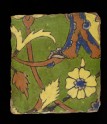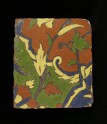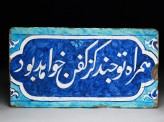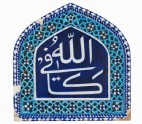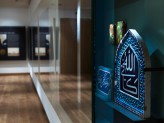Room 33 | Mughal India 1500-1900 gallery
Discover the paintings and decorative arts of the Mughal period - the most powerful and lasting of the Islamic dynasties in India.

Coloured tiles were widely used in the adornment of Islamic tombs and mosques in Central Asia and the Middle East. After 1500, this practice was followed at many centres in India, including Lahore and Multan in the Punjab.
Many tombs of rulers or revered saints were once covered with elaborate tile compositions, using floral or plant imagery, as well as calligraphic panels and geometric patterns. But little of this rich decoration now remains on many buildings.
Notice
Objects may have since been removed or replaced from a gallery. Click into an individual object record to confirm whether or not an object is currently on display. Our object location data is usually updated on a monthly basis, so contact the Jameel Study Centre if you are planning to visit the museum to see a particular Eastern Art object.
© 2013 University of Oxford - Ashmolean Museum

